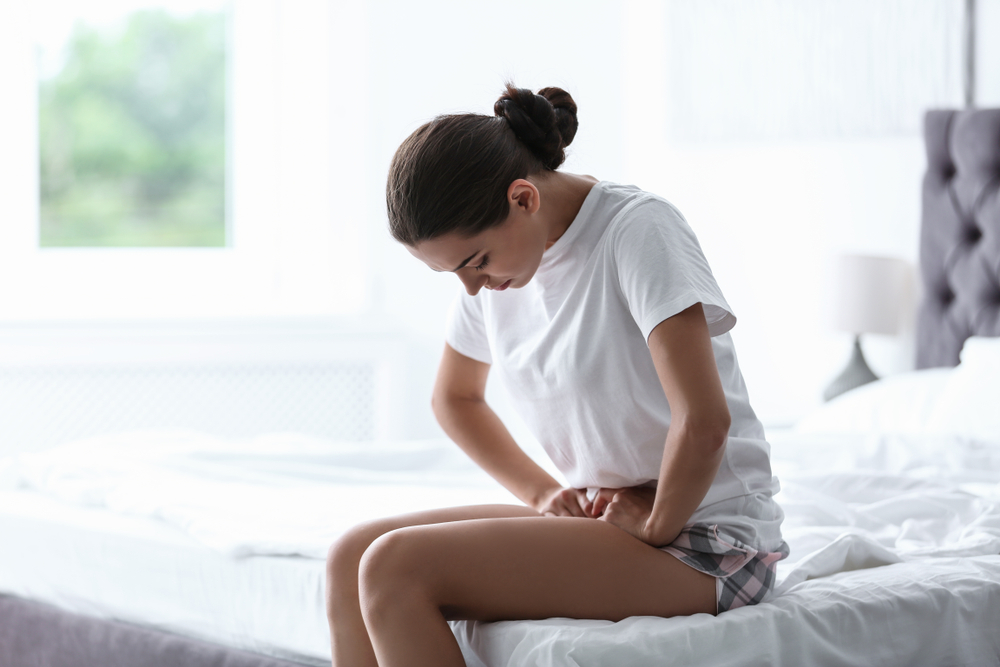One in nine Australian women like Rachel Briggs live in constant pain, some fighting daily just to participate in life because of a chronic health disorder that is largely not understood.
Endometriosis is an incurable condition that can cost sufferers $21,000 per year and the economy $7.7 billion in healthcare, absenteeism and lost social/economic participation.
Despite the huge numbers of women suffering pain and potential infertility as a result of endometriosis it has remained a somewhat hidden condition.
The Federal Government on Friday announced $58 million to support 800,000 women with endometriosis as part of the upcoming federal budget.
The funding will go towards building treatment centres, improving telehealth services and offering Medicare rebates for MRI scans related to the disorder, which affects one in nine Australian women.
The support for treatment has been backed by Prime Minister Scott Morrison’s wife Jenny, who revealed she was diagnosed with the condition when she was 26, after struggling to conceive.
Considered by some researchers to be more common than breast and pancreatic cancer and diabetes, Endometriosis occurs when tissue similar to the lining on the inside of the uterus grows in other parts of the body like the fallopian tubes and ovaries.
While widespread, City Fertility Brisbane specialist Tiarna Ernst said many females, particularly adolescents, were uneducated about how their body functioned and what was normal.
“Endometriosis is very underreported and under recognised and can take anywhere between seven to nine years before those suffering are actually diagnosed,” Dr Ernst said.
Like stories that inform, connect and celebrate the Sunshine Coast? So do we. Join an independent local news revolution by subscribing to our free daily news feed: Go to SUBSCRIBE at top of this article to register
Ms Briggs has called on Australian women to be more open and speak out about it, particularly during Endometriosis Awareness Month.
She is reflective of the many women who have endometriosis, a picture of health on the outside – fit, toned and strong – but under the surface dealing with immense pain.
“Growing up I had extremely painful periods, which I thought was normal,” admitted the 30-year-old who splits her time between the Sunshine Coast and Melbourne.
“No one could diagnose the pain I was having, and after a while I started to think I was going crazy.”
Although she always looked after her body, the pain was excruciating and the older she got her cycle became more unmanageable – with several months of extreme pelvic pain at any one time.
“You can’t actually see the endometriosis on ultrasounds, so a lot of women suffer without answers,” Ms Briggs said
After seeking the advice of multiple specialists who failed to provide a diagnosis, a new physician was able to confirm her fears, she had ‘severe Endometriosis’.
“The gynaecologist found endometriosis and adenomyosis,” she said. “The surgery isn’t for the faint-hearted, I was unable to walk for around 10 days and was bedridden for most of this time.”

Dr Ernst said symptoms varied from person to person.
“It can be painful periods, really heavy periods, pain with intercourse or going to the toilet – if you’re suffering any of these you should speak to your GP or a female health expert such as a gynaecologist” she said.
Women with endometriosis often also have fertility challenges, so Dr Ernst said it was important to be diagnosed early.
“Up to 30-50 per cent of women may experience difficulties conceiving naturally because of the condition,” she said.
Her diagnosis means Ms Briggs was already aware she may need assistance.
“I have worked for a lot of years as a nanny, I love it and feel like I was meant to be a mother, but as a single woman who still lives with this pain, realistically IVF and assisted reproductive technology is probably my only option,” she said.
Close friends Paris Rodgers and Max Jahufer recently conceived via IVF thanks to City Fertility – one of Australia’s leaders – and it’s that, that prompted Ms Briggs to explore her options seriously.
“It was recommended that I have an IUD until I decide to try for children – I have been considering egg freezing, but haven’t gone much further than that,” she said.
-with AAP





